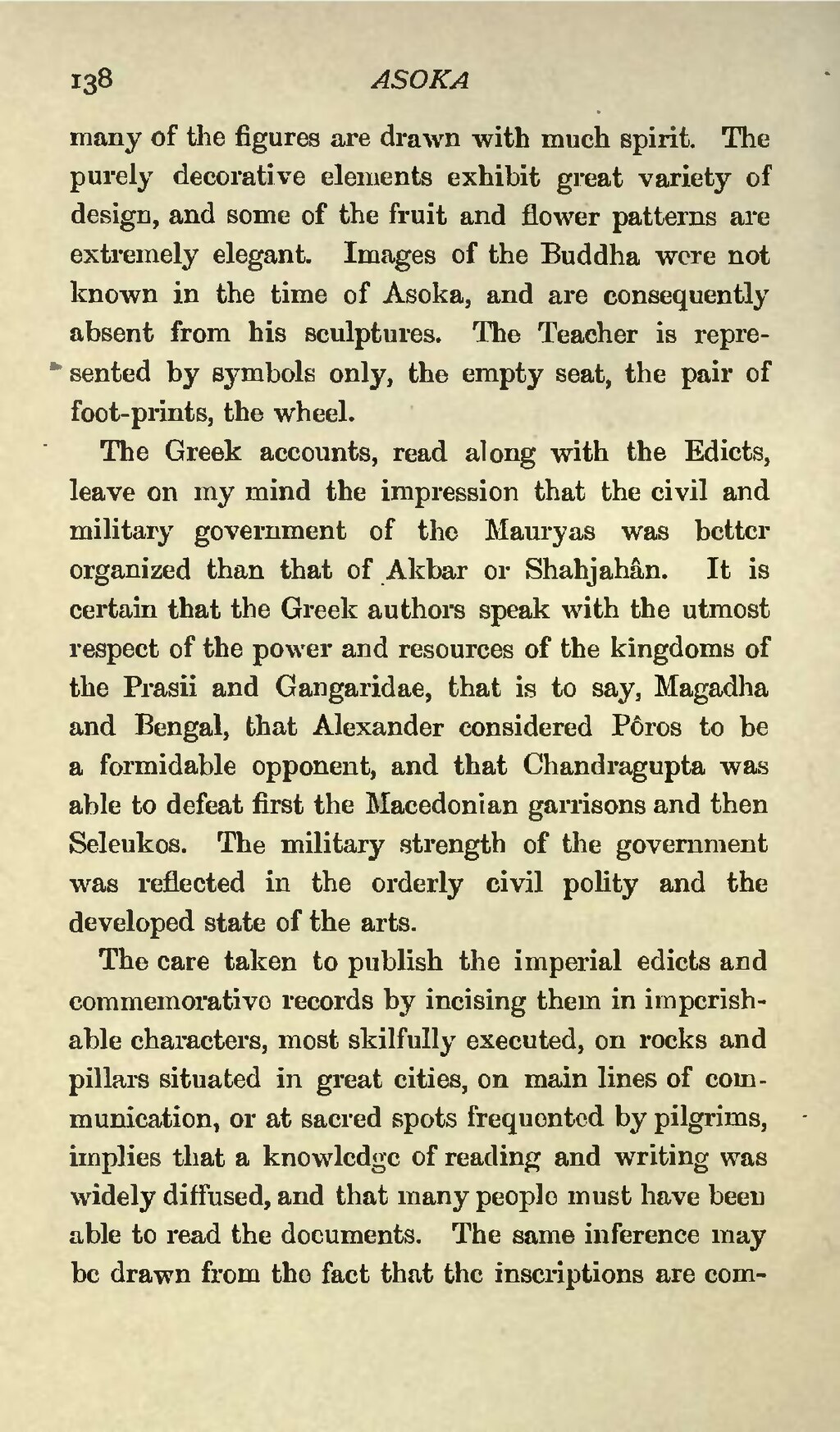many of the figures are drawn with much spirit. The purely decorative elements exhibit great variety of design, and some of the fruit and flower patterns are extremely elegant. Images of the Buddha were not known in the time of Asoka, and are consequently absent from his sculptures. The Teacher is represented by symbols only, the empty seat, the pair of foot-prints, the wheel.
The Greek accounts, read along with the Edicts, leave on my mind the impression that the civil and military government of the Mauryas was better organized than that of Akbar or Shahjahân. It is certain that the Greek authors speak with the utmost respect of the power and resources of the kingdoms of the Prasii and Gangaridae, that is to say, Magadha and Bengal, that Alexander considered Pôros to be a formidable opponent, and that Chandragupta was able to defeat first the Macedonian garrisons and then Seleukos. The military strength of the government was reflected in the orderly civil polity and the developed state of the arts.
The care taken to publish the imperial edicts and commemorative records by incising them in imperishable characters, most skilfully executed, on rocks and pillars situated in great cities, on main lines of communication, or at sacred spots frequented by pilgrims, implies that a knowledge of reading and writing was widely diffused, and that many people must have been able to read the documents. The same inference may be drawn from the fact that the inscriptions are com-
